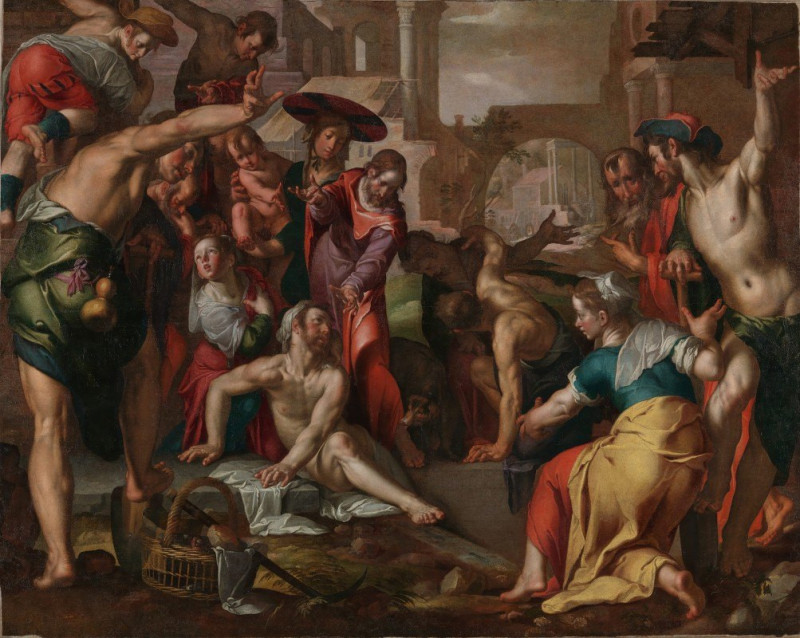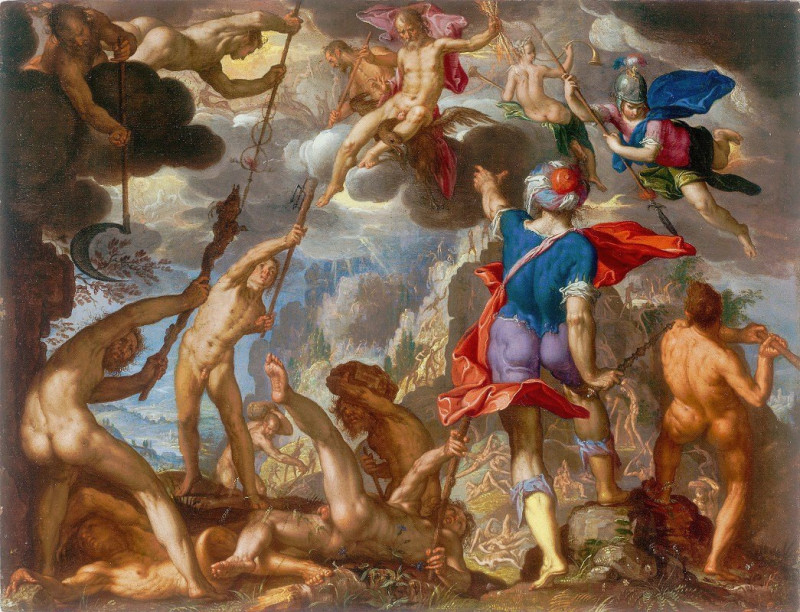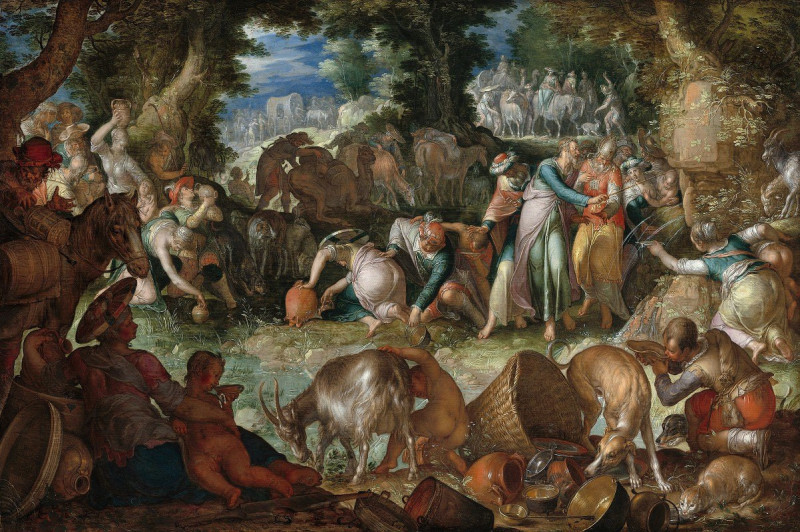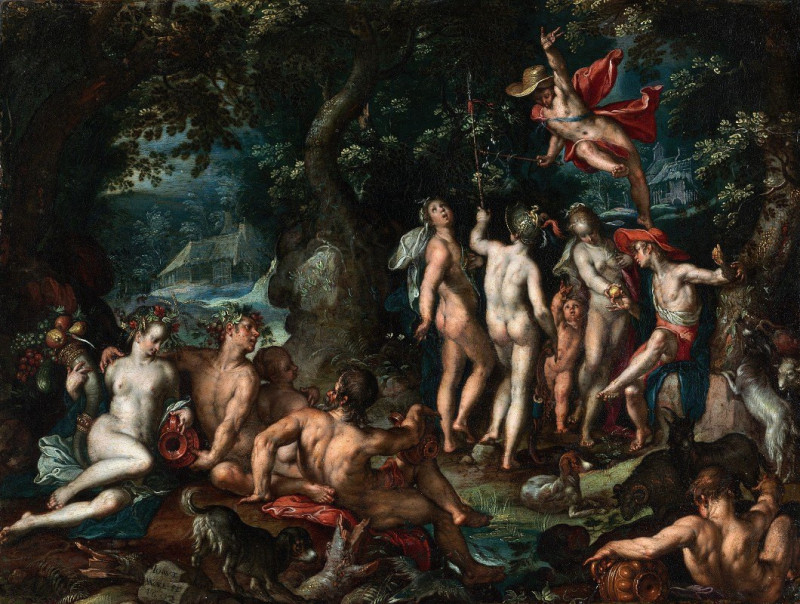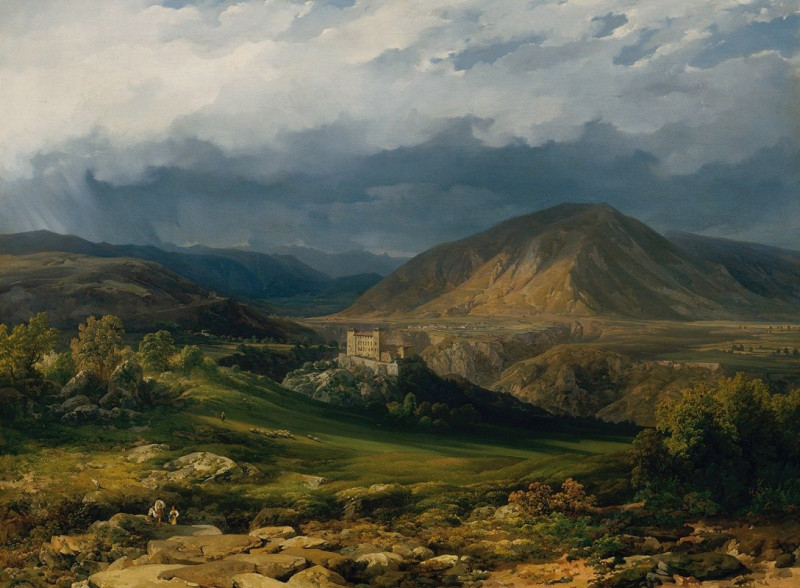The Raising Of Lazarus (Circa 1610-1615)
Technique: Giclée quality print
Recommended by our customers
More about this artwork
We warmly invite you to explore one of Joachim Wtewael's profound contributions to early 17th-century art, "The Raising of Lazarus," created around 1610-1615. This painting embodies the rich narrative detail and dramatic intensity typical of Wtewael's style, which is renowned for its intricate compositions and vibrant colors.In this compelling scene, Wtewael depicts the miraculous moment from the Gospel of John, where Jesus brings Lazarus back to life, four days after his death. The painting is teeming with emotion and movement, capturing the astonishment and awe of the gathered spectators. Jesus, identifiable by the halo around his head, stands at the right, directing the action with a serene command. His outstretched arm signals Lazarus to rise from his grave.Lazarus himself is seen at the center, emerging from his rocky tomb, bound in grave clothes, with a bewildered expression as he returns to the world of the living. Around him, various figures react in a range of emotions—from shock to joy, demonstrating Wtewael's skill in portraying complex human feelings.The background features a classical landscape, providing a depth that enhances the scene's sacred and timeless quality. The ruins evoke the passage of life to death and back again, mirroring Lazarus's own journey.This painting not only serves as a religious icon but also showcases Wtewael's mastery of color, composition, and the human form. It invites viewers to contemplate the themes of life, death, and divine intervention.Come witness this masterpiece and many others, as we celebrate the artistic achievements of the great Joachim Wtewael.
Delivery
Returns
Joachim Anthoniszoon Wtewael was a Dutch Mannerist painter and draughtsman, as well as a highly successful flax merchant, and town councillor of Utrecht. Wtewael was one of the leading Dutch exponents of Northern Mannerism, and his distinctive and attractive style remained largely untouched by the naturalistic developments happening around him, "characterized by masterfully drawn, highly polished figures often set in capricious poses".

